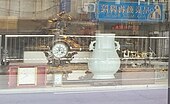Clock
The clock is one of the oldest human inventions, meeting the need to measure intervals of time shorter than the natural units such as the day, the lunar month, and the year.A major advance occurred with the invention of the verge escapement, which made possible the first mechanical clocks around 1300 in Europe, which kept time with oscillating timekeepers like balance wheels.[2] This object can be a pendulum, a balance wheel, a tuning fork, a quartz crystal, or the vibration of electrons in atoms as they emit microwaves, the last of which is so precise that it serves as the definition of the second.In the hourglass, fine sand pouring through a tiny hole at a constant rate indicates an arbitrary, predetermined passage of time.[12] The Macedonian astronomer Andronicus of Cyrrhus supervised the construction of the Tower of the Winds in Athens in the 1st century BC, which housed a large clepsydra inside as well as multiple prominent sundials outside, allowing it to function as a kind of early clocktower.In 797 (or possibly 801), the Abbasid caliph of Baghdad, Harun al-Rashid, presented Charlemagne with an Asian elephant named Abul-Abbas together with a "particularly elaborate example" of a water[15] clock.[23][24][page needed] His astronomical clock and rotating armillary sphere still relied on the use of either flowing water during the spring, summer, and autumn seasons or liquid mercury during the freezing temperatures of winter (i.e., hydraulics).In Su Song's waterwheel linkwork device, the action of the escapement's arrest and release was achieved by gravity exerted periodically as the continuous flow of liquid-filled containers of a limited size.In his memorial, Su Song wrote about this concept: According to your servant's opinion there have been many systems and designs for astronomical instruments during past dynasties all differing from one another in minor respects.Thus if the water is made to pour with perfect evenness, then the comparison of the rotary movements (of the heavens and the machine) will show no discrepancy or contradiction; for the unresting follows the unceasing.Song was also strongly influenced by the earlier armillary sphere created by Zhang Sixun (976 AD), who also employed the escapement mechanism and used liquid mercury instead of water in the waterwheel of his astronomical clock tower.The mechanical clockworks for Su Song's astronomical tower featured a great driving-wheel that was 11 feet in diameter, carrying 36 scoops, into each of which water was poured at a uniform rate from the "constant-level tank".A full-sized working replica of Su Song's clock exists in the Republic of China (Taiwan)'s National Museum of Natural Science, Taichung city.This full-scale, fully functional replica, approximately 12 meters (39 feet) in height, was constructed from Su Song's original descriptions and mechanical drawings.[26] In the 12th century, Al-Jazari, an engineer from Mesopotamia (lived 1136–1206) who worked for the Artuqid king of Diyar-Bakr, Nasir al-Din, made numerous clocks of all shapes and sizes.These mechanical clocks were intended for two main purposes: for signalling and notification (e.g., the timing of services and public events) and for modeling the solar system.The former purpose is administrative; the latter arises naturally given the scholarly interests in astronomy, science, and astrology and how these subjects integrated with the religious philosophy of the time.The astrolabe was used both by astronomers and astrologers, and it was natural to apply a clockwork drive to the rotating plate to produce a working model of the solar system.[38] They illustrate how quickly the theory of the mechanical clock had been translated into practical constructions, and also that one of the many impulses to their development had been the desire of astronomers to investigate celestial phenomena.The upper section contained 7 dials, each about 30 cm in diameter, showing the positional data for the Primum Mobile, Venus, Mercury, the moon, Saturn, Jupiter, and Mars.[39][40] Wallingford's clock had a large astrolabe-type dial, showing the sun, the moon's age, phase, and node, a star map, and possibly the planets.[37] Dondi's clock was a seven-sided construction, 1 metre high, with dials showing the time of day, including minutes, the motions of all the known planets, an automatic calendar of fixed and movable feasts, and an eclipse prediction hand rotating once every 18 years.He determined the mathematical formula that related pendulum length to time (about 99.4 cm or 39.1 inches for the one second movement) and had the first pendulum-driven clock made.The great English clockmaker Thomas Tompion, was one of the first to use this mechanism successfully in his pocket watches, and he adopted the minute hand which, after a variety of designs were trialled, eventually stabilised into the modern-day configuration.The position of a ship at sea could be determined with reasonable accuracy if a navigator could refer to a clock that lost or gained less than about 10 seconds per day.[60] Although there was an attempt to modernise clock manufacture with mass-production techniques and the application of duplicating tools and machinery by the British Watch Company in 1843, it was in the United States that this system took off.[61] Aaron Lufkin Dennison started a factory in 1851 in Massachusetts that also used interchangeable parts, and by 1861 was running a successful enterprise incorporated as the Waltham Watch Company.The possible precision achievable by a harmonic oscillator is measured by a parameter called its Q,[87][88] or quality factor, which increases (other things being equal) with its resonant frequency.Some clocks, usually digital ones, include an optical projector that shines a magnified image of the time display onto a screen or onto a surface such as an indoor ceiling or wall.Clock mechanisms are also used to drive devices such as solar trackers and astronomical telescopes, which have to turn at accurately controlled speeds to counteract the rotation of the Earth.Many buildings near major ports used to have (some still do) a large ball mounted on a tower or mast arranged to drop at a pre-determined time, for the same purpose.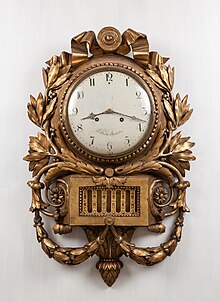

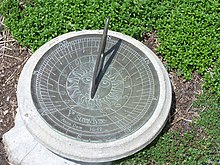

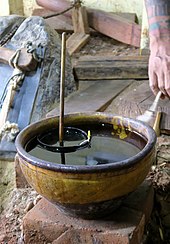
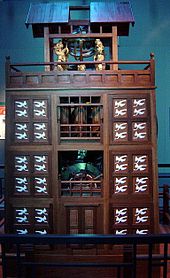

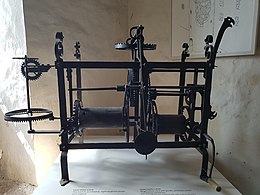
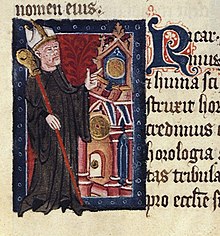


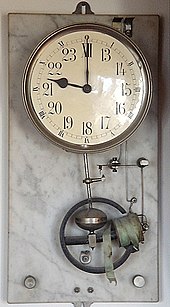
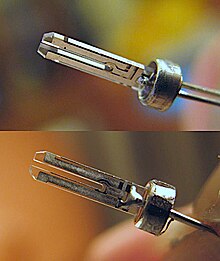
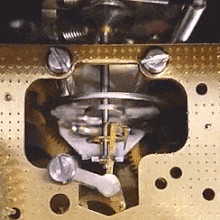
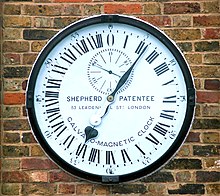
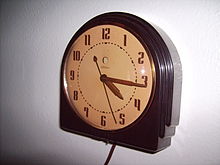
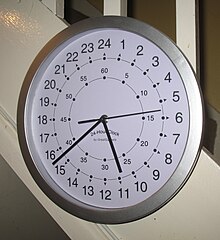
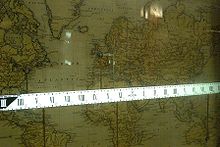


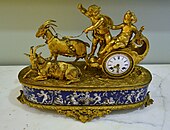


Clock (disambiguation)Timepiece (disambiguation)Clocks (song)pendulum clockhuman inventionslunar monthmillenniasundialhourglassWater clocksverge escapementbalance wheelshorologystriking clockWatchesclockmakingChristiaan Huygensclockworkelectric clocksemiconductor devicesharmonic oscillatorresonatorpendulumbalance wheeltuning forkquartz crystalelectronsmicrowavessecondCasio F-91Wdigital watchclock face12-hour time24-hourspeaking clockscognatesLow CountriesMiddle EnglishOld North FrenchMiddle DutchHistory of timekeeping devicesancient timessolar timecandle clocksincense clocksWater clockgoldbeatinggoldleafMandalaytally stickBabylonMacedonianastronomerAndronicusCyrrhusTower of the WindsAthensclocktowerByzantineIslamicPre-modernastrologicalAbbasidcaliphBaghdadHarun al-RashidCharlemagneAsian elephantAbul-AbbasPope Sylvester IIgearedArchimedesscale modelSu SongAstronomicalKaifengwaterwheelchain driveescapementTang dynastyYi XingLiang Lingzanarmillary sphereclock driveSong dynastypolymathliquid mercuryhydraulicsZhang SixunmercuryRepublic of ChinaNational Museum of Natural ScienceTaichungelephant clockAl-JazariArtuqidNasir al-Dinthe elephantcastle clocksRomance languagesSens CathedralhorologeJocelyn de BrakelondBury St EdmundsMedieval LatinOld IrishLäckö Castleastrolabecanonical hoursautomataDunstable PrioryBedfordshirerood screenCanterbury Cathedralnew clock was installed in NorwichclockkeepersRichard of WallingfordSt Albans AbbeyConvent of ChristAlbansde DondiGiovanni Dondi dell'OrologioPrimum Mobilewheel of fortuneLondon Bridgemovable feasts
